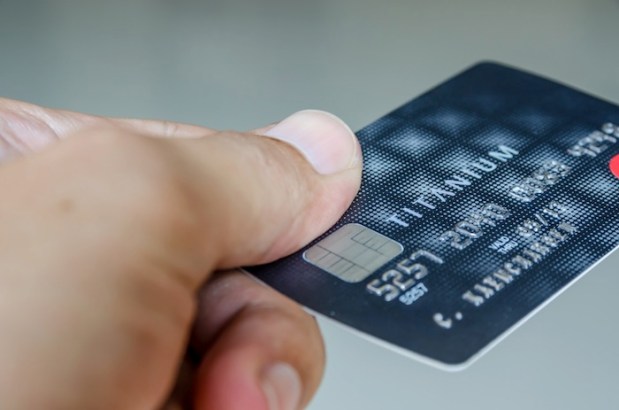The State of Plastic In A Digital World

Despite all of the massive change today in payments—whether it’s Apple Pay rewriting the payments rules or the ups-and-downs of Bitcoin and other virtual currencies—and the digital embraces of MasterCard and the Apple Pay love coming from Visa and then from the CEO at Discover and the “we’ll have our own digital wallet” warnings from JPMorgan Chase, today’s payments volume is still overwhelmingly dominated by the rather quaint plastic rectangular card with a magstripe or Chip. Or, the numerical manifestation of those card numbers online.
Therefore, with the largest card brands having reported their sea of numbers in October for the latest quarters, let’s dive in and see how the networks that power our little rectangular plastic friends are doing.
VISA
For the quarter ended in September, Visa reported $631 billion worth of payments volume in the U.S. for the quarter, with payments outside of the U.S. adding another $584 billion. That a sharp increase from the identical in 2013, when Visa’s volume was $575 billion in the U.S. and $529 billion outside the U.S.
When separating Visa credit from Visa debit, debit has a slight lead for the current quarter in the U.S. ($319 billion for U.S. debit and $313 billion for credit) but credit strongly dominates outside the U.S. ($457 billion for credit and $127 billion for debit).
If, instead of comparing debit to credit, you compare debit this quarter 2014 versus debit the same quarter 2013, the changes become less dramatic. The $313 billion in U.S. credit this quarter is up from $277 billion in the identical quarter a year ago. The $457 billion in international credit is an increase from the prior year’s $420 billion for international credit. On the debit side, Visa reported $319 billion domestically for this quarter and a $298 billion a year ago. Non-U.S. debit was $127 billion, compared with $109 during the quarter a year ago.
If you look at the total number of transactions, an interesting coincidence kicks in. The percentage of both credit and debut were absolutely identical to the prior year, with credit responsible for precisely 38 percent of all transactions for this quarter this year and the same quarter last year and debit was responsible for 62 percent for both quarters. The number of actual total transactions, of course, changed. This quarter saw 25.073 billion transactions and a year ago that quarterly number was 22.94 billion transactions. (For those who really must know, the processed transactions—as opposed to total transactions—were 16.932 billion for this quarter and 15.491 billion for the prior year’s identical quarter.)
How many Visa cards? 2.298 billion cards for this quarter compared with 2.144 billion for last year’s same quarter. When you look at credit versus debit, debit’s dominance again shines. There were 831 million new Visa credit cards roaming the countryside for this quarter (compared with 798 million a year ago). On the debit side, though, those numbers are much larger: 1.467 billion for this quarter and 1.346 billion for last year’s quarter.
MC
Figures published by MasterCard paint a picture of similar growth to Visa. The quarter saw U.S. dollar volume hitting $339 billion overall, compared with $315 billion during last year’s same quarter. Debit also held a slight lead domestically, of $178 billion for debit versus $161 billion for credit for this quarter (as opposed to $164 billion debit versus $151 billion credit a year ago).
For non-U.S., the totals were $818 billion this quarter and $731 billion for last. That breaks down to $341 billion for debit (up from $292 billion last year) and $477 billion credit (up from $439 billion last year).
The number of MasterCard processed transactions hit 10.964 billion, compared with 9.997 billion a year ago. Number of cards? That hit 2.078 billion versus 1.923 billion last year.
AMEX
In the American Express world, it reported 111.1 million cards, up from 105.4 million the year earlier. That splits almost evenly split between domestic and outside-the-U.S., with 54.4 million in the U.S. and 56.6 million outside. (A year ago, the numbers had been even closer: 52.8 million in the U.S. and 52.6 million outside.)
It also reported average spend per card, a number that is also rising, but rising faster domestically. The current quarter saw an average spend of $4,486 in the U.S., and $3,523 beyond the American border. That compares with the prior year’s identical quarter numbers of $4,255 in the U.S. and $3,467 outside the U.S..
DISCOVER
Because Discover is both a network and an issuer, its numbers are a bit different.
Discover is reporting $30.6 billion for its Discover branded cards, up from $28.9 billion for the prior year’s identical quarter. Diners came in at $6.8 billion (an increase from last year’s $6.5 billion). Network Partners actually dropped, to $2.2 billion from last year’s $2.5 billion.
And its PIN Debit Network, Pulse, it reported $40.6 billion, up from last year’s $39.5 billion.
